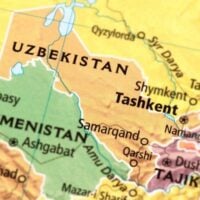Deadline: 14-Nov-22
The Environmental Protection Agency (EPA) Region 2 is announcing a grant competition to fund “Source Reduction Assistance in Communities” assistance agreements that support research, investigation, study, demonstration, outreach, education, and training using source reduction approaches (also known as “pollution prevention” and herein referred to as “P2”).
P2 means reducing or eliminating pollutants from entering any waste stream or otherwise released into the environment prior to recycling, treatment, or disposal. EPA is particularly interested in receiving applications that offer hands-on practical P2 tools, information and/or innovative P2 approaches to measurably improve public health and the surrounding environment, by reducing the use of hazardous substances, reducing toxic pollutants, supporting efficiencies in reducing resource use (e.g., water and energy), and reducing business expenditures and liability costs.
Critical Elements
The Critical Elements of a Source Reduction Assistance in Communities application must include:
- Local measurable environmental and public health improvements and investments,
- An emphasis on P2 technical assistance that can address priorities in communities,
- Use of at least one of the following technical assistance methods to address P2 activities: research, investigation, applied experiments, outreach and education, training, studies, and/or demonstration of innovative techniques and green technology,
- Multi-stakeholder problem solving, leadership, collaboration, outreach, and capacity building,
- Leveraging existing partnerships and/or developing new partnerships within the community
- Documenting and sharing solutions identified and developed so that others can replicate these practices and outcomes,
- Developing at least one or more P2 case studies and other mechanisms to amplify results
- Documenting and reporting on P2 recommendations, progress, outputs, and outcomes that result from the technical assistance provided to the beneficiaries
Funding Information
- Based on the Congressional appropriation received in Fiscal Year (FY) 2022 and anticipated in FY 2023 for the P2 Program, EPA Region 2 plans to award a total of approximately $228,000 in grant funding.
- The estimated project period for the award(s) resulting from this solicitation will begin in February 2023. Proposed project periods will be two years.
Outcomes
The term “outcome” means the result, effect or consequence that will occur from carrying out an environmental program or activity that is related to an environmental or programmatic goal or objective. Outcomes may be environmental, behavioral, health-related, or programmatic in nature, but must be quantitative. They may not necessarily be achievable within an assistance agreement funding period. Projects to be funded under this announcement are expected to produce at least one, and preferably all, of the following environmental outcomes:
- Reduction in pounds of hazardous material used and of hazardous substances, pollutants and contaminants released,
- Reductions in gallons of water used,
- Reductions in metric tons of carbon dioxide equivalent (MTCO2e) released, and
- The dollar savings associated with achieving reductions in hazardous material use, hazardous releases, water use, and energy use, including savings from reduced regulatory burden.
Beneficiaries
Beneficiaries can include, for example: for-profit and not-for-profit businesses, non-profit organizations, cooperatives and worker-owned businesses, local municipal governments, religious organizations, universities/colleges, secondary schools, consortia, and associations. Applicants will need to select at least one of the following technical assistance methods as the primary approach for performing the grant activity: a) research, b) investigation, c) experiments, d) education, e) training, f) studies, and/or g) demonstration of innovative techniques.
Eligibility Criteria
Eligible Entities
- Eligible applicants include States, the Commonwealth of Puerto Rico, U.S. Virgin Islands, Guam, any territory or possession of the United States, local governments, city or township governments, independent school district governments, state controlled institutions of higher education, non-profit organizations, (other than institutions of higher education) private institutions of higher education, community-based grass roots organizations, and federally-recognized tribes and intertribal consortia.
- Consistent with the definition of Nonprofit organization at 2 CFR § 200.1, the term nonprofit organization means any corporation, trust, association, cooperative, or other organization that is operated mainly for scientific, educational, service, charitable, or similar purpose in the public interest and is not organized primarily for profit; and uses net proceeds to maintain, improve, or expand the operation of the organization. The term includes tax-exempt nonprofit neighborhood and labor organizations. Note that 2 CFR 200.1 specifically excludes Institutions of Higher Education from the definition of non-profit organization because they are separately defined in the regulation. While not considered to be a nonprofit organization(s) as defined by 2 CFR 200.1, public or nonprofit Institutions of Higher Education are, nevertheless, eligible to submit applications under this RFA. Hospitals operated by state, tribal, or local governments or that meet the definition of nonprofit at 2 CFR 200.1 are also eligible to apply as nonprofits or as instrumentalities of the unit of government depending on the applicable law. For-profit colleges, universities, trade schools, and hospitals are ineligible. Nonprofit organizations that are not exempt from taxation under section 501 of the Internal Revenue Code must submit other forms of documentation of nonprofit status such as certificates of incorporation as nonprofit under state or tribal law. Nonprofit organizations exempt from taxation under section 501(c)(4) of the Internal Revenue Code that lobby are not eligible for EPA funding as provided in the Lobbying Disclosure Act, 2 U.S.C. 1611.
For more information, visit EPA.
For more information, visit https://www.grants.gov/web/grants/view-opportunity.html?oppId=343571









































